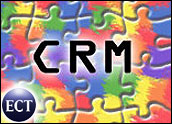
A PricewaterhouseCoopers’ Management Barometer survey has identified CRM as one of the top drivers of change management initiatives among multinationals today.
The typical company is currently using an average of five change strategies to achieve desired benefits, it said. Leadership training, at 77 percent, and CRM, at 71 percent, are the most popular change strategies, according to the survey.
Simplification, at 67 percent, and organizational restructuring, at 66 percent, are the top initiatives.
Other top projects identified in the survey: Total Quality Management, at 59 percent; re-engineering, at 56 percent; service-oriented IT architecture, at 55 percent; and Six Sigma, at 41 percent.
Customer Base Remains Key
That CRM is a top focus is a reflection of the continuing emphasis companies — particularly multinationals — are placing on their customer relationships, according to Don Christian, partner, and Karen Vander Linde, leader of PricewaterhouseCoopers’ U.S. change management practice.
This most recent generation of CRM initiatives, though, is being influenced by a new set of factors, along with the fundamental driver of companies wanting to better understand, segment and serve their customer bases.
For instance, targeted communications, or personalization of product offerings, have become more important to companies, Christian told CRM Buyer.
Blogs, for example, are the perfect tool for a company to speak to its customers in its own voice, he pointed out. This is not only a reflection of changing technologies but also of changes in many companies’ customer demographics.
“Companies have realized they need to have different wants to reach out to their customers,” Christian said, especially the 20- and 30-something demographics.
The overarching question for companies is how to customize to a market of one, but still aggregate that information so it is useful to the organization.
Companies are using these new technologies to sell themselves — not only their products or services — to their customers, Vander Linde said. Energy companies, for example, are taking pains to show their contributions to maintaining the environment.
Driving Growth, Measuring Success
Despite shifting macroeconomic influences, the drivers behind change management initiatives tend to remain the same year in and year out.
Drivers cited in this survey include the desire for growth; the desire to reduce operational costs; domestic competition; quality improvement programs; changing customer preferences; new regulations; energy costs; mergers and acquisitions; foreign competition; diversification; and faster product cycles.
The survey also found that the success of these projects is measured in multiple ways — usually including subjective evaluation by senior management, at 87 percent; quantitative performance measures of success, at 78 percent; return on investment, at 78 percent; and benchmarking, at 70 percent. Surveys of customers were cited by 62 percent of participants and employee surveys by 45 percent.























































Social CRM
See all Social CRM